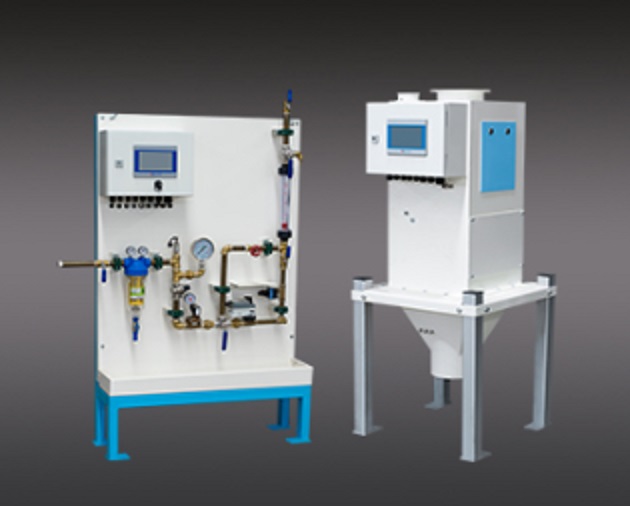4.1 The concentration of harmful gases in the confined space exceeds the occupational health protection threshold
(1) Phosphine.
Phosphine is currently the most economical and effective toxic gas used for insecticide and mildew inhibition in cereals, and the human body will have a toxic effect on the human body when it touches a certain dose. Studies have reported that long-term exposure to different concentrations of phosphine gas is prone to headache, insomnia, fatigue, memory loss, vomiting, decreased appetite, poor sense of smell and cough and other symptoms; when the concentration of phosphine in the air is 5 m L/m3, people have poisoning symptoms in 6 h; when 7 m L/m3, it has a serious impact on the human body after a few hours; when it is 100~200 m L/m3, it has a serious impact on the human body for 0.5~1 h.
(2) High concentration of carbon monoxide.
Carbon monoxide is produced by welding, heating, cutting, etc., which consume oxygen in boilers, oil tanks, drying towers, or incomplete combustion. When the content is ≤ 30 mg/m3, it can work for a long time, when it ≤ 50 mg/m3, the continuous working time should not exceed 1 h, when it ≤ 100 mg/m3, the continuous working time should not exceed 30 min, and when it is ≤ 200 mg/m3, the continuous working time should not exceed 15~20 min.

(3) High concentration of carbon dioxide.
GBZ 2.1-2019 "Occupational Exposure Limits for Workplace Hazards Part I: Chemical Hazards" stipulates carbon dioxide as a chemical hazard. The physiological activities of microorganisms and pests in grain warehouses, as well as the respiration of grains, consume oxygen and produce carbon dioxide. In particular, high-moisture foods, whether aerobic or hypoxic respiration, will produce a large amount of carbon dioxide gas. In the long-term closed storage of the granary, carbon dioxide accumulates more and more, and the concentration is too high to affect the normal function of the respiratory center and nervous system, making people feel unwell, and in severe cases, there will be dizziness, headache, dyspnea, and even fainting, suffocation, etc.
4.2 The oxygen content in the confined space is insufficient, less than 19.5%, and it is in a state of hypoxia
.png)
According to the provisions of GB 8958-2006 "Safety Regulations for Hypoxic Hazardous Operations", underground silos, shallow round silos, vertical silos and tall bungalow silos are all anoxic hazardous work sites. Causes of hypoxia include:
Controlled atmosphere grain storage. The oxygen concentration is controlled below 2% to inhibit the growth and development of stored grain pests and the metabolism of grain, and the oxygen concentration is controlled in the range of 2%~12% and the average oxygen concentration is controlled at 5%. Whether it is the implementation of effective carbon dioxide or nitrogen modified atmosphere storage, it will form an extremely serious anoxic environment in a limited space;
(2) After receiving the new harvest of corn, wheat, rice and soybeans in the warehouse, the tall bungalow warehouse, vertical silo, shallow round silo, underground silo, etc., due to the influence of factors such as the post-maturity period, the metabolism of the grain is strong and the respiration intensity is violent, resulting in a large amount of oxygen consumption in these limited spaces, and in a short time, it will also cause hypoxia in the limited space.
4.3 The concentration of flammable explosive dust exceeds the critical concentration and the mechanical and electrical maintenance is not timely
(1) Dust explosion.
In confined spaces such as shallow round silos, vertical silos, above-ground and underground corridors, grain unloading pits, lifting equipment, slip pipes and ventilation and dust removal equipment, if the ventilation and dust removal effect is poor or the dust is not cleaned in a timely and thorough manner, it is easy to increase the local dust concentration and produce potential safety hazards. When the dust concentration in the limited space reaches a critical concentration, if the accumulated heat is too much, or if it encounters an open flame source or electric spark, it will produce dust explosion.

(2) Mechanical and electrical failure accidents.
In the equipment, facilities and electrical circuits, the bucket elevator deviates, slips and breaks the belt; the belt roller and the bracket, the scraper scraper and the box have collision and friction; the power supply and distribution lines are aging, damaged, and the wire head is exposed; the electrical facilities do not have explosion-proof and poor insulation to the ground; the electrical equipment is overloaded and has too much heat.
(3) Falling, falling.
In a warehouse with poor lighting, workers are prone to falling or falling into the air.
5, Prevention and control system for the safety management of confined space operations
5.1 Safety production management system for limited space
According to the Interim Provisions on the Safety Management and Supervision of Confined Space Operations of Industry and Trade Enterprises issued by the State Administration of Work Safety, the safety production management systems and procedures that industry and trade enterprises with confined space operations shall establish include:
a safety responsibility system for confined space operations,
an approval system for confined space operations,
a safety management system for confined space operation sites,
a safety training and education system for persons in charge of confined space operations, guardians, operators and emergency rescue personnel, and
(6) Safety operation procedures for confined space operations.
It is necessary to conscientiously comprehend the "Interim Provisions on the Safety Management and Supervision of Confined Space Operations of Industry and Trade Enterprises", and continuously improve the prevention and control measures for confined space operations in a targeted manner.
5.2 Safety prevention and control measures for confined space operations


Wuxi Hasen Import And Export Co.,Ltd
Contact:Amina Zhu
Mobile:+8613812016908
Email:amina@immyhitech.com
Add:#68,Xindongan Rd,Xinwu Distt,Wuxi,Jiangsu,China 214000